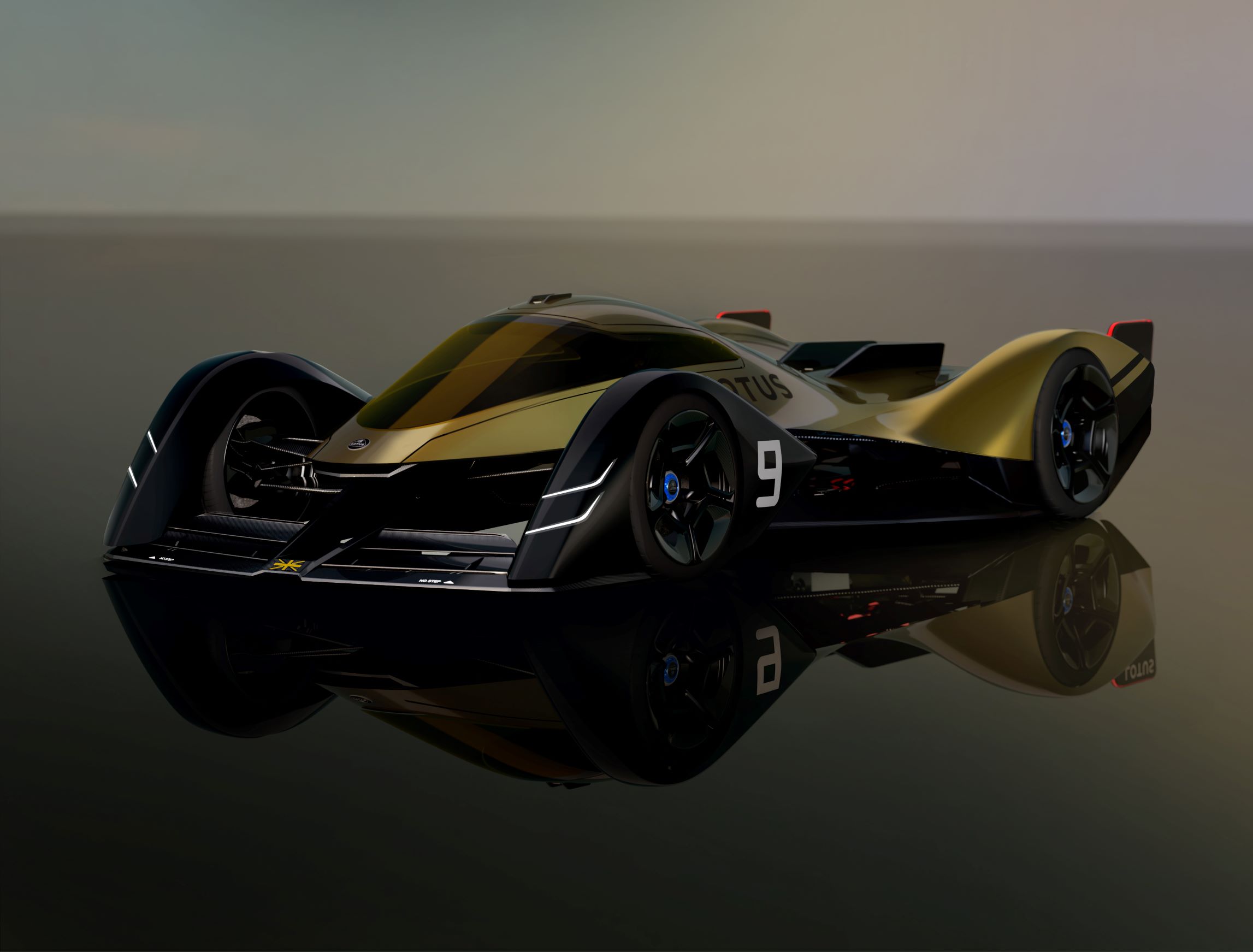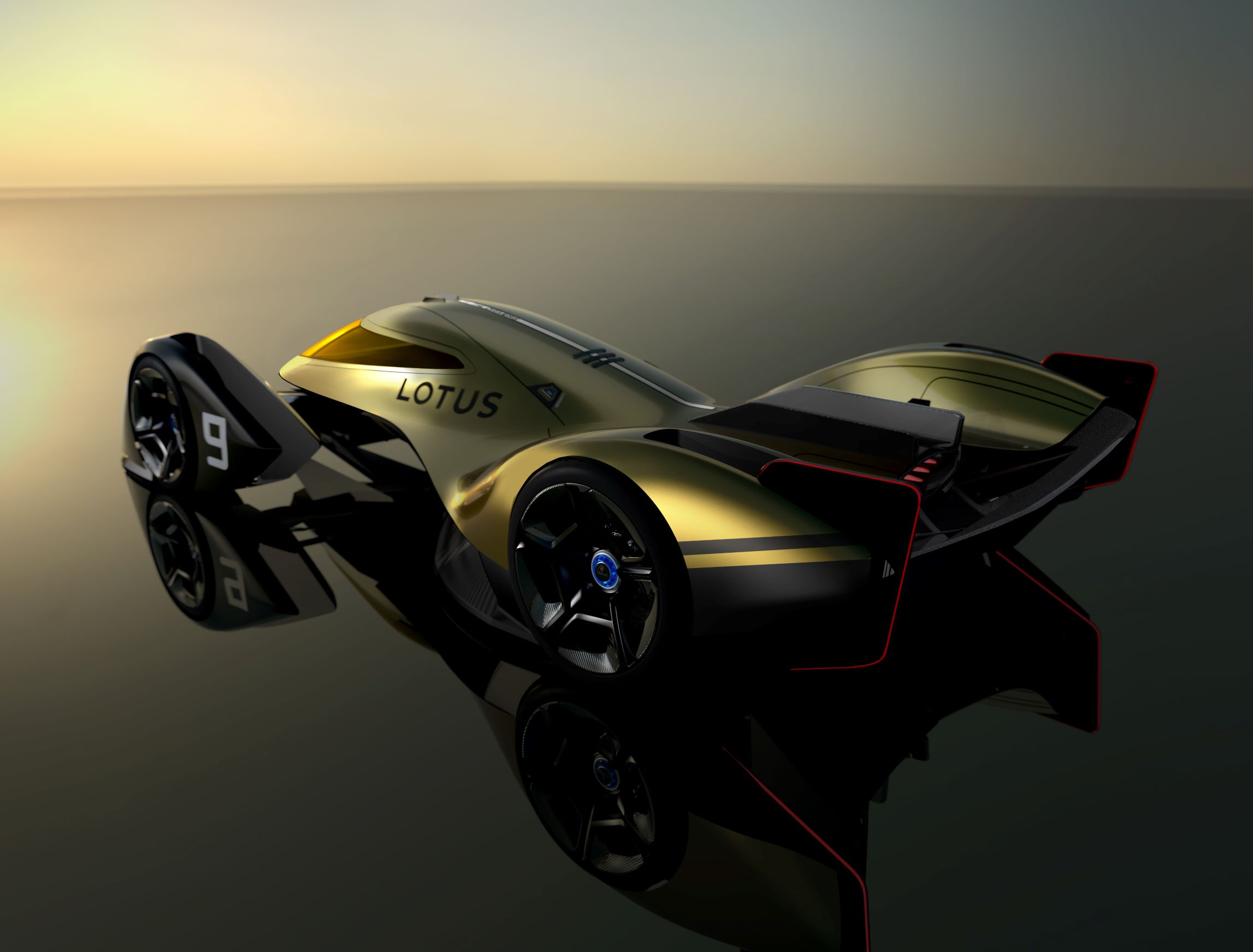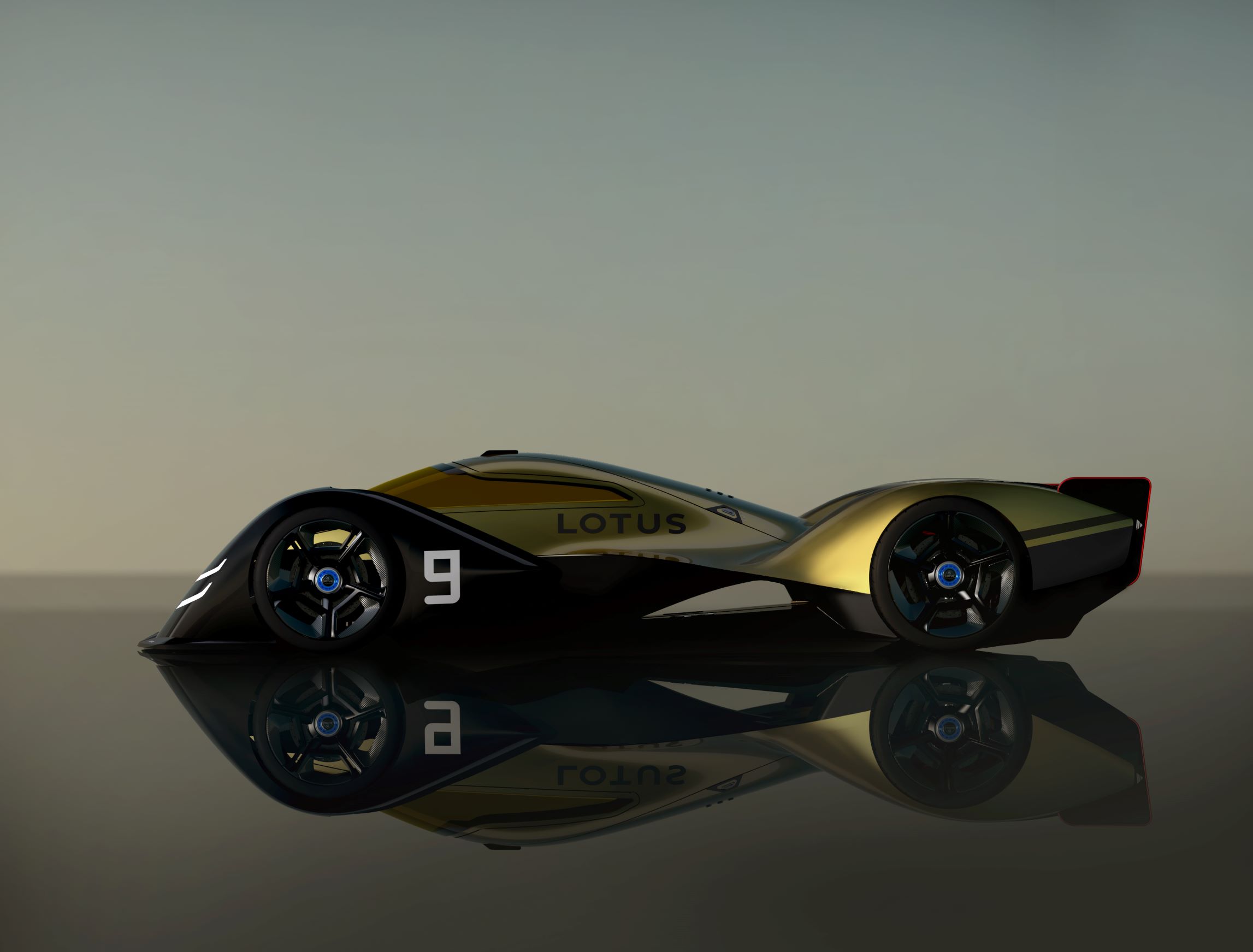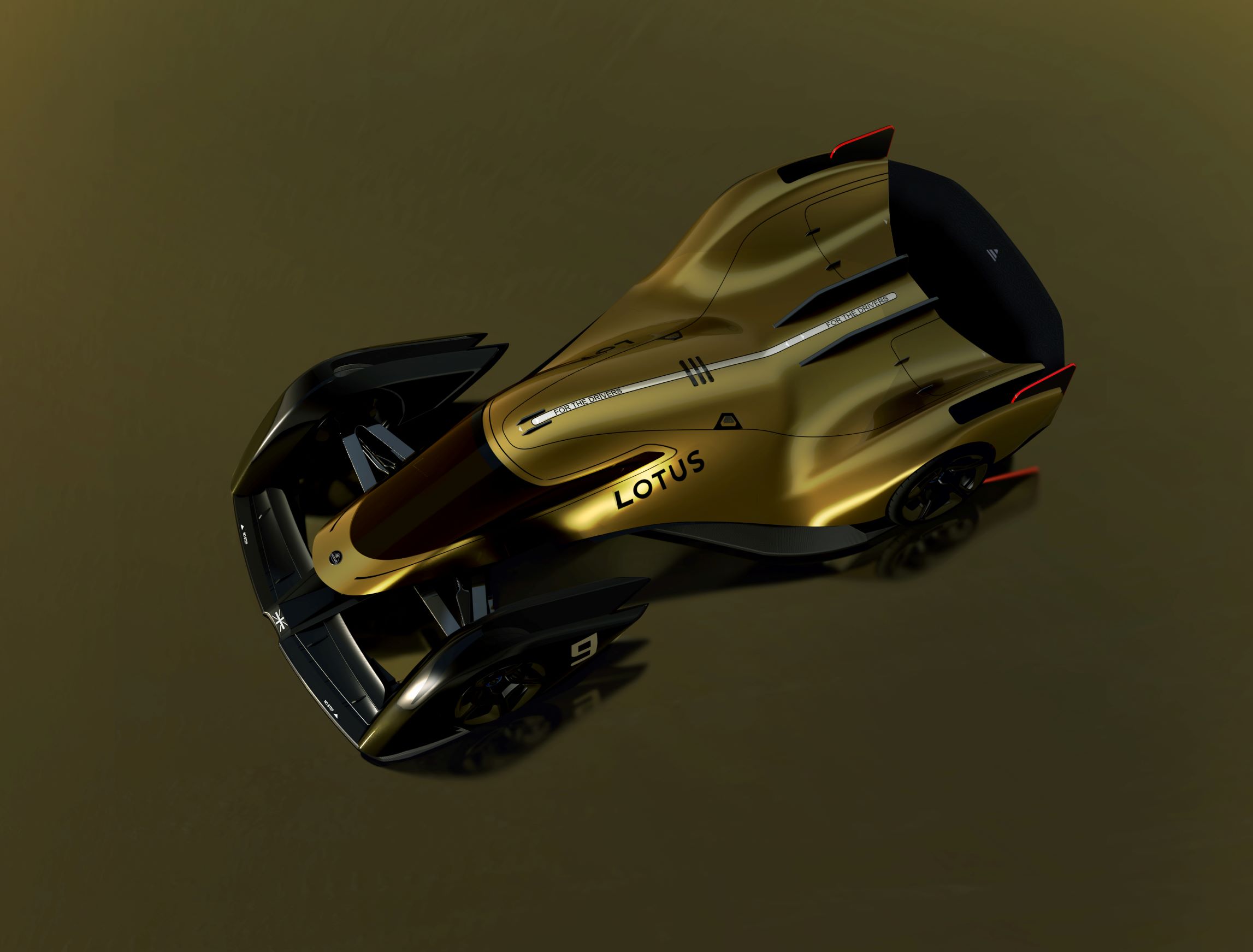The Lotus E-R9 Is an Electric Race Car With a Fighter Jet-Inspired Design
This futuristic racer will be “partly driven like a car and partly flown like a fighter jet.”

Lotus’s radical new E-R9 race car previews the electric future of motorsports while paying tribute to a winning heritage on the track.
Though E-R stands for Endurance Racer, its striking black-and-gold colorway harks to the hues worn by Lotus F1 cars’ during the 13-time championship-winning marque’s glory years in the sport, such as the Mario Andretti-driven Lotus 79.

However, the “9” competition number is a reference to the Mark IX car that Lotus founder Colin Chapman and his crew piloted at the team’s Le Mans debut in 1955. If the E-R9 is actually created to compete in the world’s premiere endurance event in its target year of 2030, it would coincide with the Mark IX’s 75th anniversary.
The pure EV boasts a sleek fighter jet-style canopy centrally mounted in a delta-wing upper body, as well as a wild next-gen aerodynamic package. While today’s most technologically advanced racers merely sport active wings, Lotus has devised “morphing” body panels located across the delta-wing profile.

These surfaces change their shape according to performance sensor inputs to further decrease drag on the straights and generate maximum downforce in the corners. And rather than relying entirely on tire contact patches to change direction, “vertical control surfaces” at the rear would aid in generating aerodynamic forces to guide the vehicle.
Lotus predicts the experience of piloting the E-R9 would be “partly driven like a car and partly flown like a fighter jet.”

Thought there aren’t currently plans for a prototype, the E-R9 was developed by Lotus chief aerodynamicist Richard Hill and Louis Kerr, the principal platform engineer on the Lotus Evija electric hypercar. They’ve imagine an powertrain similar to the Evija’s—one motor for each of the four wheels—but with a quick-swap battery unit.
“Battery energy density and power density are developing significantly year on year,” Kerr said. “Before 2030, we’ll have mixed cell chemistry batteries that give the best of both worlds, as well as the ability to ‘hot-swap’ batteries during pitstops.”
We’ll circle back in 2030 to see if the Lotus E-R9 has won Le Mans.
